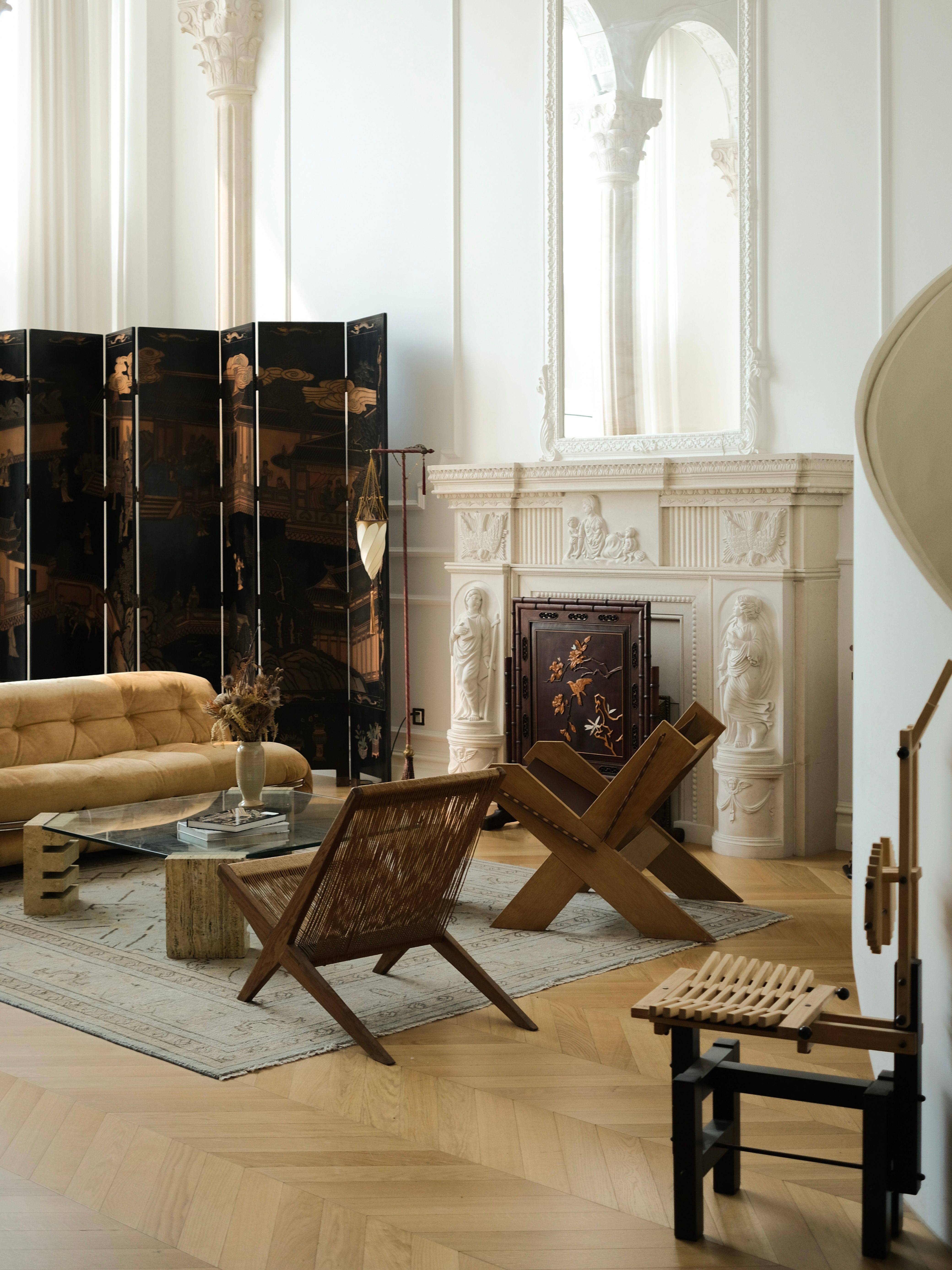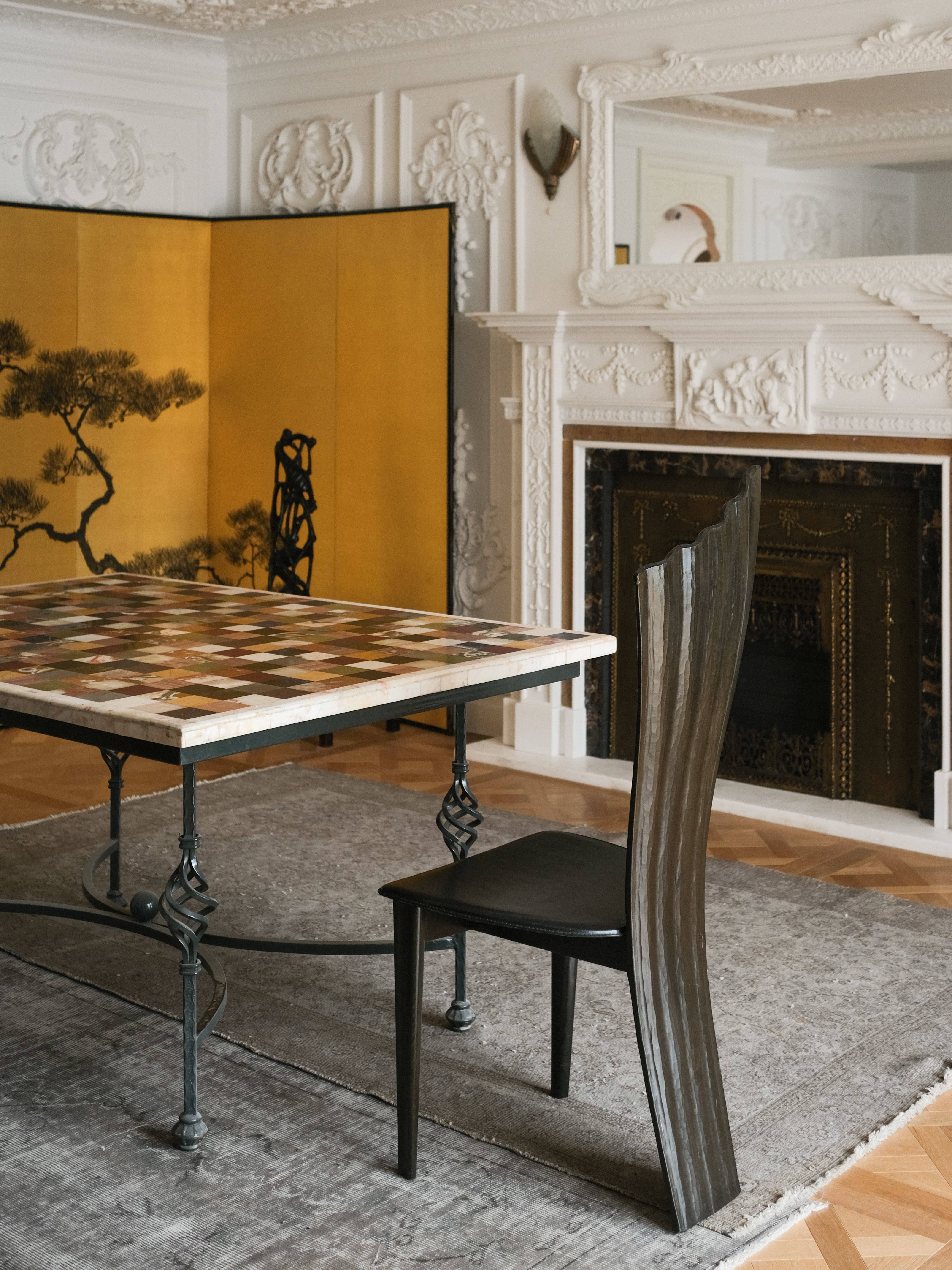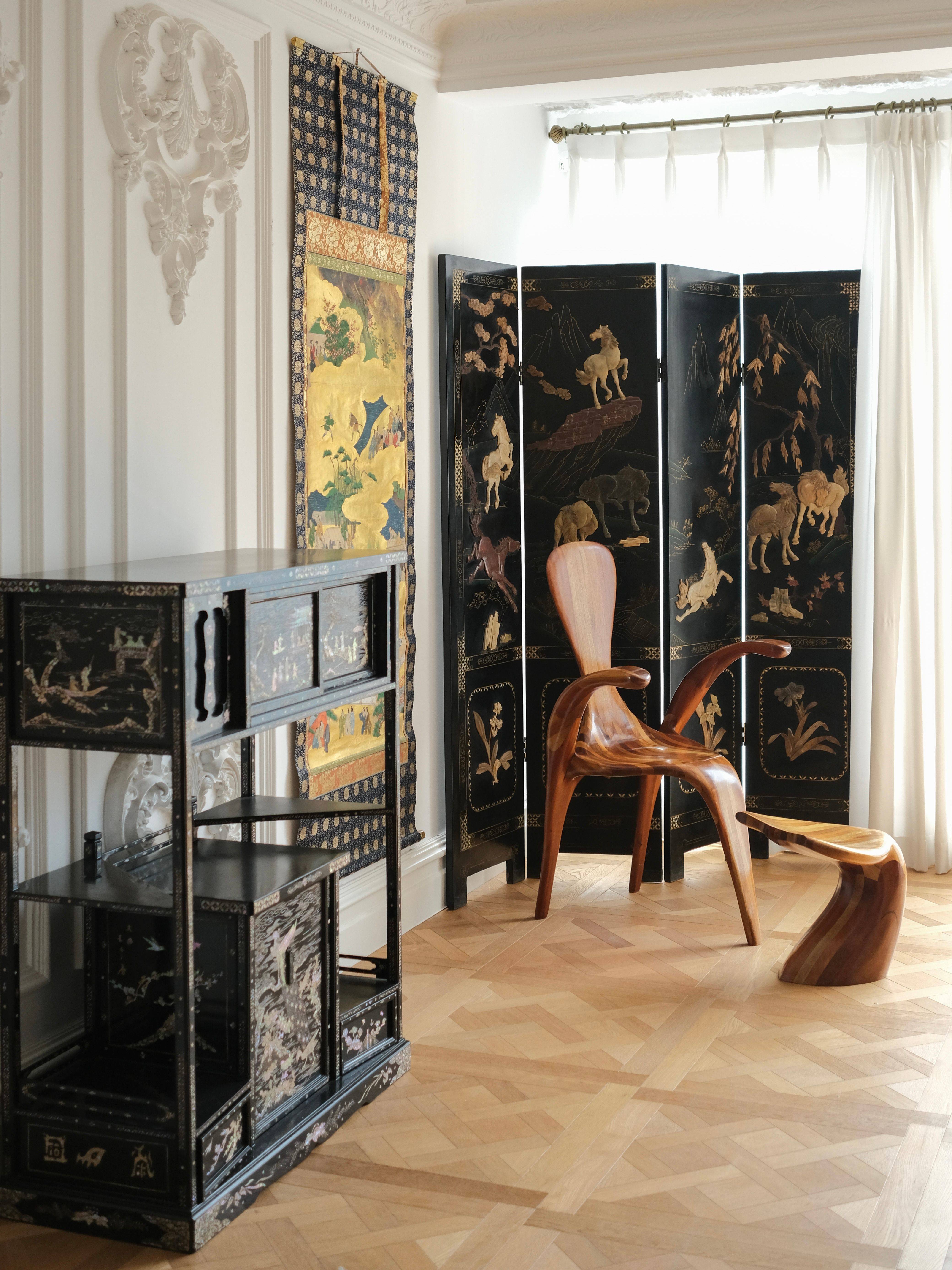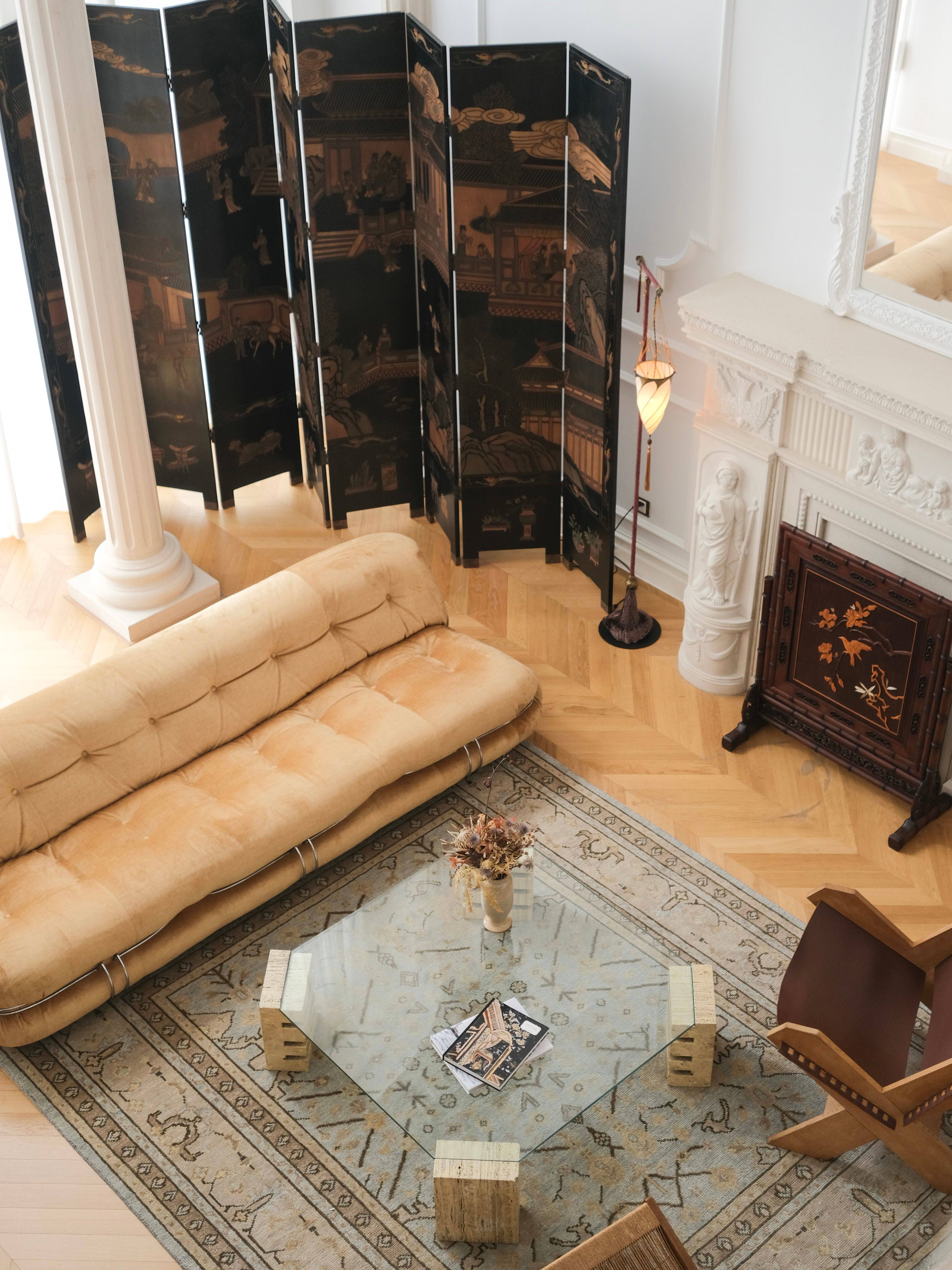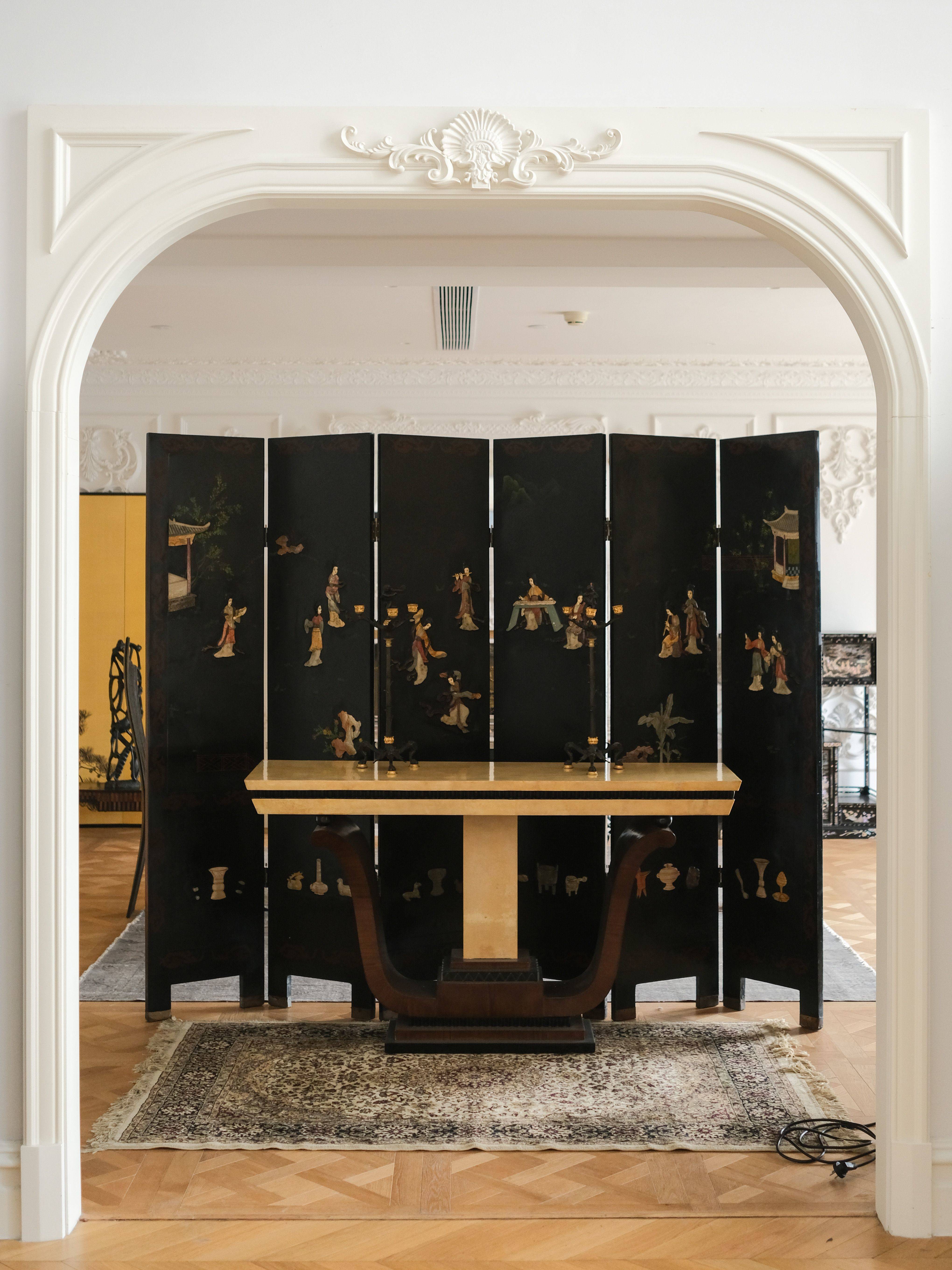Within this elevated setting, the project embarks on a deeper exploration of the 'Chinoiserie' style, building upon previous exhibitions, with a particular focus on the profound medium of 'lacquer screens'. Selected for their richness, grandeur, and enigmatic quality, the subsequent discussion elucidates how screens embody both 'revelation'—showcasing a dazzling array of materials, craftsmanship, and artistic expression on their surfaces—and 'concealment'—providing a serene, private haven behind them, imbued with layers of historical and cultural significance.
Unlike the standalone three-story old villas on Shanghai's Kangping Road, which are imbued with a strong Haipai (Shanghai-style) charm, the Hangzhou space was co-designed by its founder, allowing for the realization of more creative inspirations. The plaster ceiling, molded and carved from an artist's drawing, the hybrid Roman columns, and the Turkish white sand fireplace are all enveloped in a pure misty white. This represents both an attempt to embrace a purer French style and a journey of "dream-weaving." In the higher-ceilinged space, the inherent presence of the screen finds room to unfold, also harking back to the original intent behind the space's creation—a fondness for the "Chinoiserie" style. When the screen unfolds, it reveals as much as it conceals. On the screen, a riot of colors dazzles, adorned with inlaid jade and gold tracery; behind it, hosts and guests sit peacefully, tucked away in a secluded corner. Following the exhibitions of Qing Dynasty treasures and AMBELIE furniture collections, we delve deeper into the Chinoiserie style, exploring its specific branches, and refocusing our attention on the collection of "lacquer screens." Why screens? It would be hard to find a more rich, grand, or enigmatic medium. When unfolded, the screen is both revelation and concealment. The "revelation" lies in the screen's surface, where a profusion of colors gleams, embellished with inlaid jade and gold tracery. The frames are often crafted from fine woods like ebony, rosewood, or huanghuali; the lacquerwork showcases techniques such as incised lacquer, mother-of-pearl inlay, "hundred-treasures" inlay, and gold tracery; the panels display an extravagant array of materials—marble, agate, jade, wood carvings, paintings, embroidery, kingfisher feather art... Every conceivable treasure is showcased in its full splendor. As the folding screen unfolds, one feels immersed in a trove of jewels, with eyes dazzled by the brilliance. The "concealment" lies behind the screen, where hosts and guests sit in tranquility, hidden in a secluded nook. Since its inception, the screen has been endowed with meanings ranging from meditation and contemplation to displays of power, protection against drafts, and the creation of intimate spaces. Bai Juyi's Song of Everlasting Sorrow captures this: "Pushing aside clothes and pillow, she rises in hesitation; pearl-adorned curtains and silver screens unfold in succession."Behind the radiant screen lies the private, hidden world of its owner.
